Over the past number of weeks the incessant number of stories regarding incidents of sexual assault and harassment by military members against other military members has reached levels that I have not seen in years. Since I have served in the military continuously in one capacity or another for almost 32 years I have seen this phenomena develop and reach a point that I did not think was possible, which endangers the morale and mission of the military and the trust of our society in our military institutions.
When I first entered the military in 1981, enlisting in the California Army National Guard and in the Army ROTC program at UCLA had no idea what would transpire over my career and how I as a man would see the problem of sexual assault. I entered the military not a few years after the changeover from a military built on conscription to an all volunteer force and the integration of women into units, which while not “combat arms” units would certainly be in the fight should we ever go to war.
I guess that the first places that I saw what would now certainly be prohibited behaviors were in my National Guard unit, a Field Artillery Battalion in Southern California which though not authorized any females, had an administrative support section of females who worked for the personnel officer and Command Sergeant Major. When we went to the field they would accompany us and the stories of what went on with them and members of the leadership were infamous. When I attended my ROTC Advanced Pre-Commissioning Camp at Fort Lewis Washington we had three female cadets in my platoon. They lived in a separate barracks with other women but trained with us. They were subjected to some of the most despicable treatment that I had seen in my life. Their looks, motivations and morals were scrutinized in ways that the editors of the National Enquirer would be proud. They had senior instructors appear to give them unwanted favor and for that they ended up being derided by their fellow male cadets.
Me early in my career as a Platoon Leader in Germany
After I was commissioned as a Medical Service Corps Officer in 1983 and assigned to a Medical Ambulance Company in Germany I saw the problem grow as more women were assigned to such field units because of the indiscriminate nature of the Army assignment system. My unit eventually had 63% of its assigned strength as females, about 85% of our medics were female. Our sister company was just that, they peaked at 73% female strength. While I was in the unit I served as a Platoon Leader, Company Executive Officer and eventually the Company Commander when our Company Commander, who actively spoke in racist and sexist terms referring to blacks as “the seed of Cain” and women as “unequal to men” using his religion as justification was relieved of command.
I was privileged to serve with some of the finest women soldiers that I have every served alongside while in that unit. My XO retired as a Lieutenant Colonel and my Platoon Sergeant retired as a First Sergeant. Both were hard chargers and as competent or more than most of the men that I served with but were often, usually behind their backs treated with distain for their competence and ability to serve in what until that point had been pretty much a “men’s club.”
While I was serving as a company commander I worked hard, I had only been an officer a little over two years, a very junior First Lieutenant when I took command following the relief of the previous commander. I found though that some things were not simply a matter of individuals but problems in the very institution that since I was a child had idolized.
One of those situations came out when I attempted to prosecute a Sergeant for forcing a very junior female soldier into a sex act in her barrack room after duty hours. His wife was 8 months pregnant and also a Sergeant but at the base medical clinic. He was caught by her and soon the barracks had every member of the chain of command as well as a copious amount of Military Police and CID agents swarming in it. The poor girl was found half undressed under her bed and had to be taken by my former platoon sergeant out of harm’s way after all was said and done while the Sergeant was being read his rights. As the Company commander I had the primary responsibility to file charges. Since the man was a Sergeant and under I could not reduce him in rank using the Article 15 Non-Judicial Proceedings process and he was to leave the Army in a couple of months so a court martial would have only kept him in the unit longer. So I referred the case to the Group Commander, a full Colonel and decorated Vietnam veteran and aviator.
The Colonel had been our senior instructor when I was at the Academy of Health Sciences and he was a man that I admired. However, when the case got to him he did less that I would have been authorized to do and in addition did not revoke the award of the Army Commendation Medal which the Sergeant was being given for the end of his service as he got ready to leave the Army. When I found out I stormed to the Colonel’s office and told him that he, the Colonel had embarrassed the entire Medical Group and my Company in particular because the case was the talk of the entire base. It could not easily be covered up. I was told by him “I have done what I have done.” He then turned his back on me and from that moment on I was treated with contempt by him and his closest staff members. I learned the hard way that honesty can get you in trouble.
My next assignment was as the Adjutant of the Academy of Health Sciences. I was a newly promoted Captain and worked closely with the Brigade Legal Officer who served as the prosecutor. While I was assigned there three major incidents come to mind all of which involved significant sexual assault, harassment or treatment of students or junior enlisted staff members.
One of those was an aggravated rape of a 18 year old female trainee who was raped by a male trainee over concertina wire in a dark area near her barracks when she was walking back from the trainee PX and Snack Bar on a Saturday Night. It was a brutal case and we sent the young soldier to a General Court Martial when he was convicted of assault, battery, rape and a number of other charges and sentenced to 40 years in Leavenworth prison.
The second was the first trial of a soldier that was having unprotected sex with other soldiers while knowingly being HIV positive. He was a player, a good looking man who easily picked up young women. He worked as a personnel sergeant in one of the training battalions and used his looks, his rank and influence to have unprotected sex with a number of the young female clerks that worked in that personnel center without letting them know of his HIV status. He was found out when the Battalion Commander who was walking through the office overheard one of the females talking with another about her date with him and the sex. Since the commander had personally counseled the sergeant of his legal responsibilities being HIV positive, which included informing sexual partners and ensuring that any sex he had was “safe sex” the commander brought him up on charges. Eventually he was tried and convicted at General Court Martial and since he was beginning to show the outward symptoms of the opportunistic infections of fell blown AIDS was sentenced to 6 months confinement and a Dishonorable Discharge. One of the women that he had sex with, a junior soldier as well eventually tested HIV positive.
The last of the major events at the Academy was a Christmas break, sex for grades scandal that eventually encompassed 17 instructors who had a rather large orgy and party at one of the instructor’s off base home. The San Antonio Express News picked up the story and ran with of course and it made front page news. Unfortunately, most of what they reported, with the exception of the use of “whipped creme” at the orgy was contained in police and CID reports. The whipped creme was certainly an interesting twist and needless to say a good number of instructors were disciplined or their actions.
I left active duty in the fall of 1988 to return to the National Guard while attending seminary. While in the Guard I served in all male units that unlike my unit in California did not have its own assigned female administrative detachment and harem. However that doesn’t mean that I still didn’t see cases of sexual indiscretion, but most of what I saw happened happened outside of my command.
Since I go back a long time I do remember the effects of the Navy’s 1991 Tailhook scandal that eventually ended the careers of some 300 officers, including a number of admirals. I was promoted to the rank of Major in December 1995 and transferred to the Army Reserve and was mobilized in July 1996 to support the Bosnia intervention. About that time a major sexual assault and harassment scandal took place at the Army Training Center at the Aberdeen Proving Grounds. It like Tailhook was all over the news and the Army tried to respond by getting tough on offenders and by sending teams around to emphasize what was right and what was wrong. One of these teams showed up at our base in Germany and about 60 chaplains were gathered together to get the training.
Now I was a mobilized reservist who had not only been a chaplain but had seen and or help prosecute these kinds of issues before as a Company Commander and Brigade Adjutant. I was somewhat jaded by what I had seen and during the lecture I raised my hand into the air and uttered something that many of my colleagues were thinking. One of our instructors, acknowledged my upraised hand so I asked the question. I said “Ms so and so, my name is Chaplain Dundas and unlike most of these gentlemen and women I am a mobilized reservist.” She she asked me what my comment was and I said “Ma’am, it seems to me if people would simply treat people as they would want to be treated or have their wives or daughters treated by others none of this training would be necessary.” You could hear the air being sucked out of the room as my active duty colleagues looked in shock to see who uttered such heresy. Even the instructor seemed stunned. I continued “It seems to me that if we took a hard line and punished the offenders severely and stopped treating this like it was a joke as an institution then we wouldn’t need to have this kind of collective training.” My comment was rapidly passed over and after the training a number of more senior chaplains came to me and thanked me for being honest. Not a few months later the Command Sergeant Major of the Army was relieved of his duties for alleged sexual harassment, yet another scandal.
In 2003 there was a major scandal at the Air Force Academy which very few people were ever punished for, despite a massive number of substantiated complaints of unwanted sexual harassment by female cadets. I have lost count of the number of commanders and other senior officers relieved of duties for inappropriate behaviors with junior subordinates many times of the sexual harassment or assault variety. Any casual reader of the Navy, Army, Air Force or Marine Corps Times can testify to how many of these instances happen and unfortunately they are but the tip of the iceberg I am afraid.
Lt. Col Jeffrey Krusinski, the chief of the Air ForceSexual Assault Prevention and Response program
Just in the past month the program director of the Air Force Sexual Assault and Prevention program, a Lieutenant Colonel was arrested for drunkenly accosting a women in a parking lot, the director of the Army program at Fort Campbell Kentucky, also a Lieutenant Colonel was charged with violating a protective order put in place by his estranged wife and a Sergeant First Class, the director of a unit Sexual Assault and Prevention program at Fort Hood Texas was charged with running a prostitution ring using of course, junior female soldiers. Brigadier General Jeffery Sinclair, the former Deputy Division Commander of the 82nd Airborne Division is being prosecuted for is accused of having an illicit affair and engaging in wrongful sexual conduct with several women who were under his command.
General David Petreus and his “biographer mistress” Paula Broadwell
These instances of course do not take into account of the scandal involving former Iraq and Afghanistan Commander and former CIA Director General David Petreus and his relationship with his biographer an Army Reserve Lieutenant Colonel. To make matters worse some General Officers who are the convening authorities for Courts Martial offenses have given clemency or set aside punishments of senior officers convicted by General Court Martial proceedings of sexual assault or harassment crimes.
I could go on and on and on but will not because frankly it is nauseating and is bringing so much discredit to the services that it cannot be joked about. Almost all of these cases involved some form of undo command influence or other criminal behavior. Although the crimes sometimes are committed by male homosexuals or lesbians, the vast majority are heterosexual and often involve high ranking career service men and women who are married heterosexuals both male and female.
When I look at this situation and ask myself what is going on I have to agree that it is a massive problem. You don’t get so many instances involving so many individuals of high rank without it being something systemic in the military culture. While we can point to the fact that the military is composed of people of the broader society we are a very small segment of that society and percentage wise very few people even qualify to enlist in the military. We are very selective as to who we take in and who we keep. Yet we still have these problems at every level of the chain of command in every branch of the Armed Forces. These are magnified in the eyes of the broader society because of our oath to support and defend the Constitution of the United States and because we are entrusted by the larger society of representing the best of what the country stands for and which we are supposed to defend. Our mission, especially in a military where men and women serve together in combat, often enduring the same hardships and separations that previous generations of military personnel did not have to face becomes compromised when men or women abuse their rank, privilege and office to take advantage of other men or women, heterosexual or homosexual in the conduct of those duties. It compromises the chain of command, it compromises the mission and it destroys the trust needed to be mission ready. We cannot use the excuse that it happens in the civilian world so we shouldn’t be surprised by it in the military.
All the services have implemented training designed to get this problem under control. However, it will not change until people in the military decide that such acts are not just senseless, tasteless or offensive but often an violent assault on another person. I was reading an article in the Military Law Review today written about the Tailhook scandal. The author wrote something very profound with which I completely agree:
“The heart of the problem in redressing sexual harassment in the armed forces has not been Congress’s failure to expand the traditional coverage of the UCMJ so that it directly criminalizes specific forms of hostile environment conduct such as sexist remarks, tasteless jokes, and other offensive gestures. Instead, the problem has been the military leadership’s failure to recognize that in many cases, like those arising in Tailhook, sexual mistreatment actually constitutes a serious assaultive crime that must be prosecuted accordingly.” Arresting “Tailhook: The Prosecution ofSexual Harassment in the Military. Lieutenant Commander J. Richard Chema MILITARY LAW REVIEW Volume 140 Spring 1993 p.63
The fact is that the law is established, training is conducted at all levels and this still happens far to often. What it demonstrates to me is that like my first attempt to deal with a sexual assault as a Company Commander in 1986 that the military culture itself is to blame. Despite our best attempts there are many who figure that boys will be boys and girls will be girls and it is not a big deal. Well maybe not, until rape, murder occurs, or a baby is born out of wedlock, or a young man or woman commits suicide because of the trauma and shame that they endure from a senior NCO or officer that has great influence over their career and life.
I know that we can do better because I know a lot of good men and women, officers and senior enlisted that are committed to changing the culture. That being said it takes the commitment of everyone to do this right. Since it doesn’t look like we in the military are capable of handling this ourselves it is that members of Congress will change the UCMJ and maybe take these cases out of the hands of military commanders. That could well be the case. You can only give excuses so many times over so many decades as to why you don’t do better as an institution before those that have the civilian oversight decide that you are incapable of change. We just may have reached that point in our military justice system.
Folks, this might be interesting as a lawyer or ethicist, but it is not going to be something that we in the military will enjoy.
Someone did a You Tube video using footage from the German language film Downfall where Hitler takes his commanders to task in the last days of the war. The subtitles have been changed to deal with the recent sexual assault scandals. It is very pointed satire and maybe, just maybe we in the military should take it seriously.
Peace
Padre Steve+



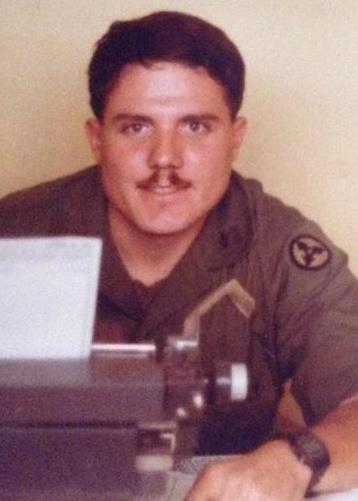








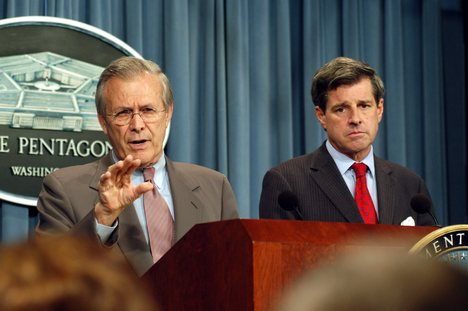




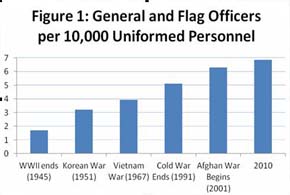

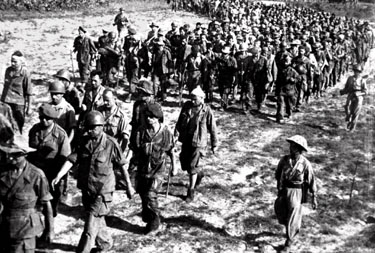

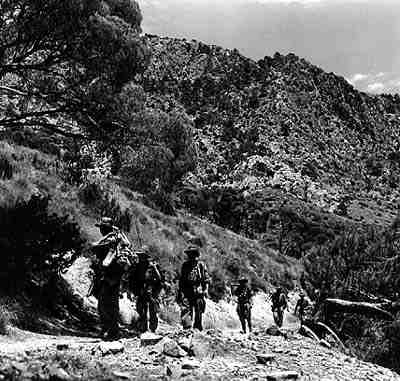







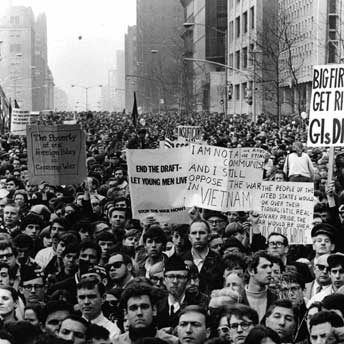



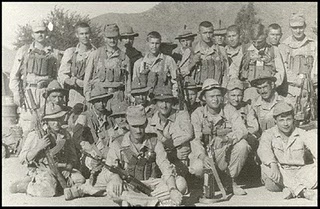

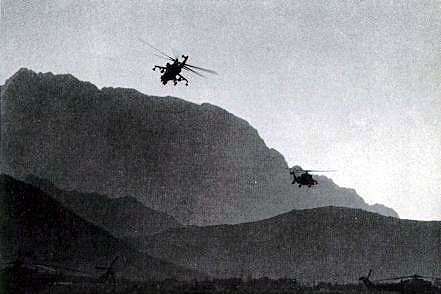

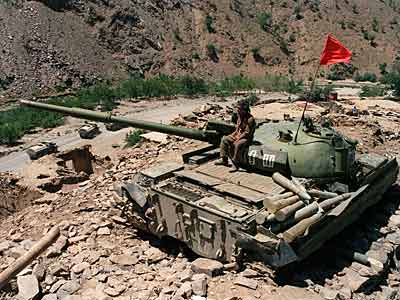

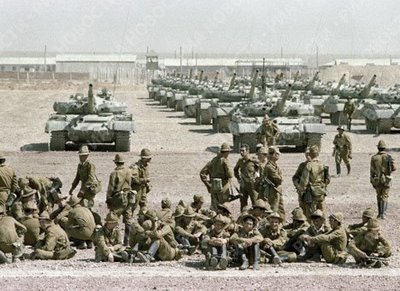












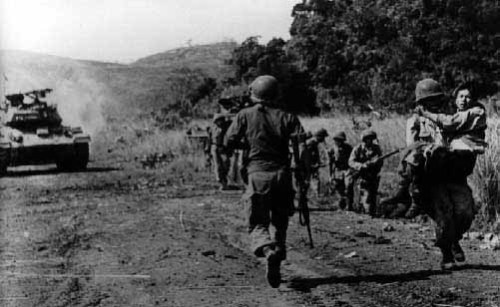 1st Foreign Legion Parachute Regiment in Indo-China
1st Foreign Legion Parachute Regiment in Indo-China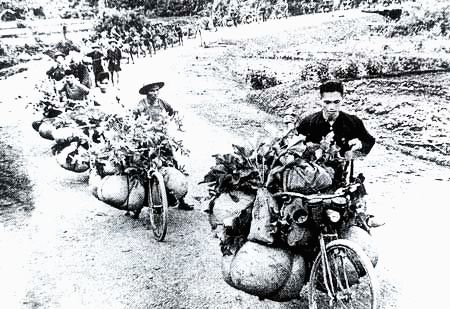 Primitive but Effective- Viet Minh Supply Column The French Could Never Stop them
Primitive but Effective- Viet Minh Supply Column The French Could Never Stop them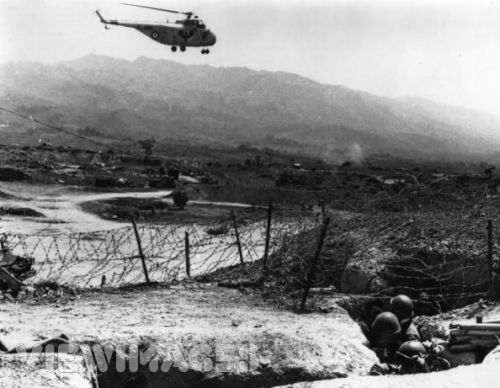 Isolated and Besieged Dien Bien Phu
Isolated and Besieged Dien Bien Phu Foreign Legion in Algeria
Foreign Legion in Algeria Surrender at Dien Bien Phu
Surrender at Dien Bien Phu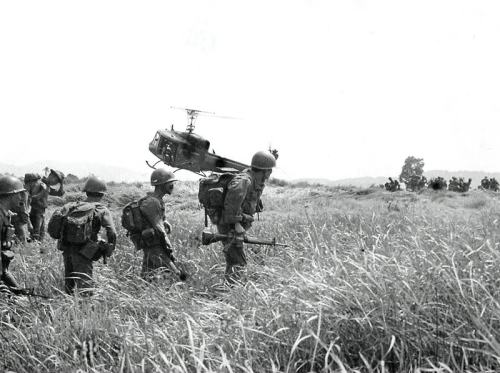 Joint US-ARVN Operation
Joint US-ARVN Operation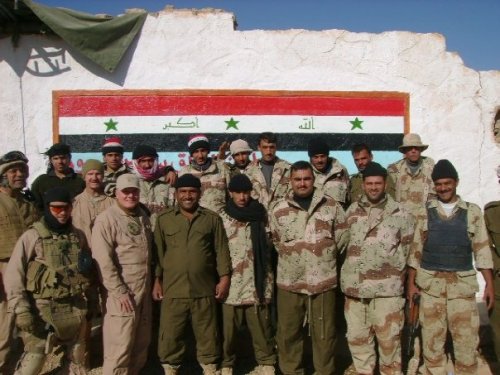 The Author and Advisors with Iraqi Border Troops near Syria
The Author and Advisors with Iraqi Border Troops near Syria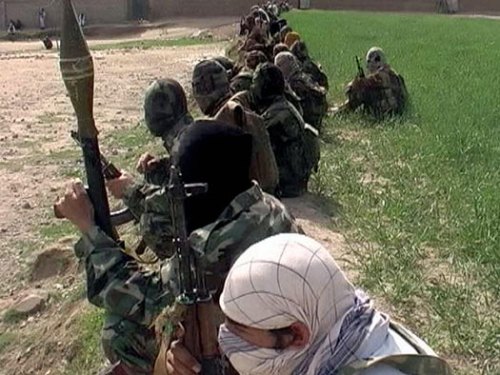 Taliban Insurgents
Taliban Insurgents USMC Training Team in Afghanistan
USMC Training Team in Afghanistan